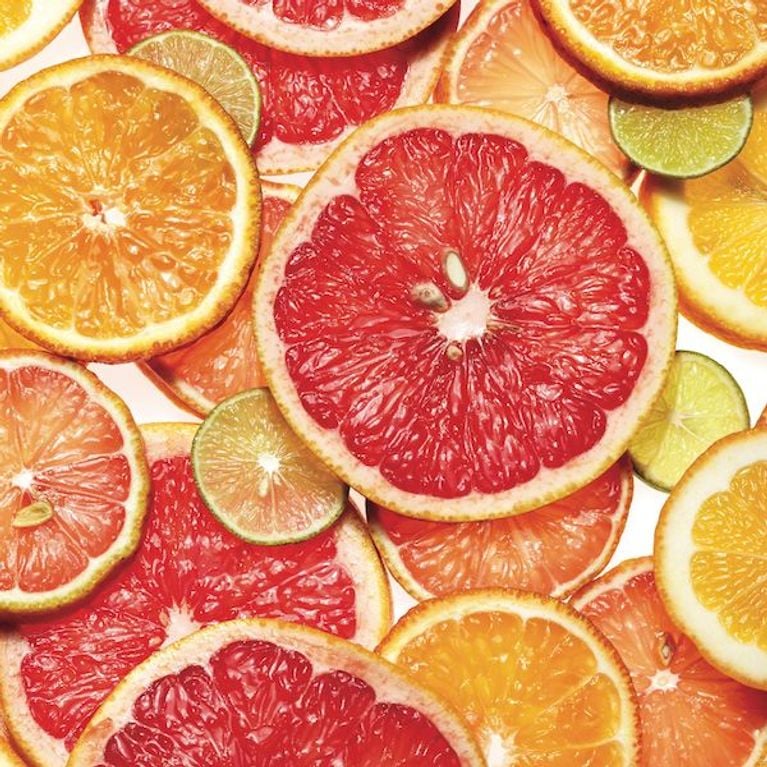A guide to winter citrus

One of the best parts about winter is that with it comes citrus season, packing a powerful punch with bright and refreshing flavours. With plenty of species available, from the rich in vitamin C orange to the bright and sour lime, citrus fruits are versatile with the pulp, juice and peel all having a place in the kitchen. The only part of citrus that isn’t used is the pith: the white spongy layer between the fruit and peel that has a strong, bitter taste in most varieties.
Storage tip: Citrus keeps best at room temperature for three to five days. It can also be stored in in a loose bag in the crisper drawer of the fridge for longer, but keep in mind, they should be brought back up to room temperature before use for best flavour. (Stay away from storing them in a sealed bag, as they are more likely to soften and grow mold.)
Lemons Lemons are highly acidic variety of citrus. They're a kitchen staple that can be used in everything from sore-throat-healing teas to colourful tarts, and salads — even as a kitchen cleaner! When shopping, choose lemons that are heavy for their size with an unblemished skin. Use lemon juice to finish off dishes with a touch of acid, which is known to brighten flavours, while the zest will add the perfect lemony touch to baked goods.
Did you know? The meyer lemon is a cross between lemons and what is believed to be either mandarins or oranges; the orange-tinged fruit has a thinner skin and lower acidity, and is slightly sweeter than the traditional lemon, making it a flavourful substitution in the kitchen.
Oranges There are many types of varieties of oranges available, but the Navel orange is what you’ll typically find in stores. Sweet and naturally seedless, it’s ideal for cooking and snacking.
Did you know? Packed with immune-boosting properties, one navel orange supplies the daily dose of vitamin C for adults.
Blood oranges These oranges get their name from the orange-red skin and dark pulp. Slightly smaller and sweeter than the typical orange, it has berry-like flavour notes. Blood oranges tend to be slightly more expensive and are therefore best used where the vibrant colour and flavour is the star of the show.
Try it:
Blood-orange screwdriver
Limes An essential ingredient in both Southeast Asian and Latin American cuisine, limes are very fragrant with both sour and sweet notes. The juice from this highly acidic, small fruit has many uses and from everyone’s favourite cocktail to tacos, soups and even dessert, it adds the perfect finishing touch. When storing limes, keep them away from sunlight as this can alter their colour and flavour, they can be stored at room temperature for 3 to 5 days or in the crisper drawer of your fridge.
Grapefruits Grapefruit is one of the largest citrus fruits. Commonly, both pink and white varieties are available in stores. More tart than an orange, it has a sweetness that helps to balance its natural tartness when it’s in peak season. When shopping for grapefruit, look for fruits that are plump with a thin skin (this is an indicator of juiciness).
Did you know? White grapefruits tend to be tangier, while pink varieties are slightly sweet.
Mandarins Mandarins are a smaller variety of oranges that are very sweet and juicy. This loose-skinned fruit is best eaten out of hand, as the peel comes off easily (this loose skin also gives it a softer, more plump feel when compared to a regular orange).
Did you know? Clementines and tangerines are both subgroups of mandarins.
GET CHATELAINE IN YOUR INBOX!
Subscribe to our newsletters for our very best stories, recipes, style and shopping tips, horoscopes and special offers.